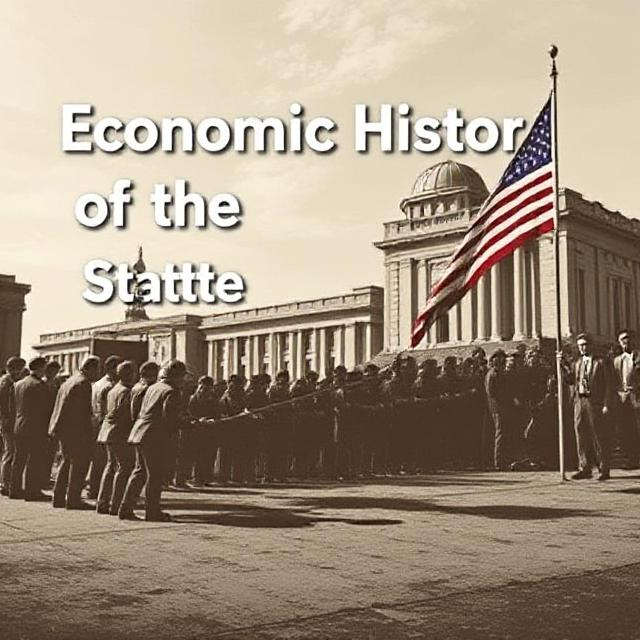The economic history of the United States is a complex narrative that reflects the evolution of its economy from a collection of agrarian colonies to a global economic powerhouse. This transformation has been influenced by various factors, including technological advancements, demographic changes, government policies, and international relations. Understanding the economic history of the U.S. provides valuable insights into the country’s current economic landscape and its role in the global economy.
Colonial Economy

Agrarian Foundations
In the colonial period, the economy was primarily agrarian, with most colonies relying on agriculture for sustenance and trade. The Southern colonies, with their fertile land and favorable climate, became known for cash crops such as tobacco, rice, and indigo. These crops were labor-intensive and relied heavily on enslaved African labor, which became a cornerstone of the Southern economy.
Economic Structure
The Southern plantation system developed a hierarchical structure, with wealthy landowners at the top, followed by small farmers, indentured servants, and enslaved individuals at the bottom. This system not only shaped social relations but also influenced political power dynamics, as plantation owners wielded significant influence over local and colonial governments.
Trade and Mercantilism
The colonial economy was also shaped by mercantilist policies, where the British government sought to control colonial trade for its benefit. Colonists were required to trade primarily with England, leading to a system of trade routes known as the Triangular Trade. This system connected Europe, Africa, and the Americas, facilitating the exchange of goods, enslaved individuals, and raw materials.
Impact of Mercantilism
Mercantilism restricted colonial economic development by limiting trade partners and forcing reliance on British markets. However, it also spurred some colonial industries, such as shipbuilding and rum production, as colonists sought to meet the demands of trade. The Navigation Acts further enforced these restrictions, leading to tensions between colonists and the British government.
The Role of Commerce
In the Northern colonies, a more diversified economy emerged. Commerce, shipbuilding, and fishing became vital economic activities. Cities like Boston and New York developed as major trading hubs, facilitating the exchange of goods and ideas. The rise of merchant classes in these regions contributed to the growth of a market-oriented economy.
Urban Development
The growth of commerce and trade led to the development of urban centers. These cities became melting pots of cultures and ideas, fostering innovation and entrepreneurship. The emergence of a middle class in these urban areas began to challenge the traditional social hierarchies established in the agrarian South.
The Revolutionary War and Its Aftermath
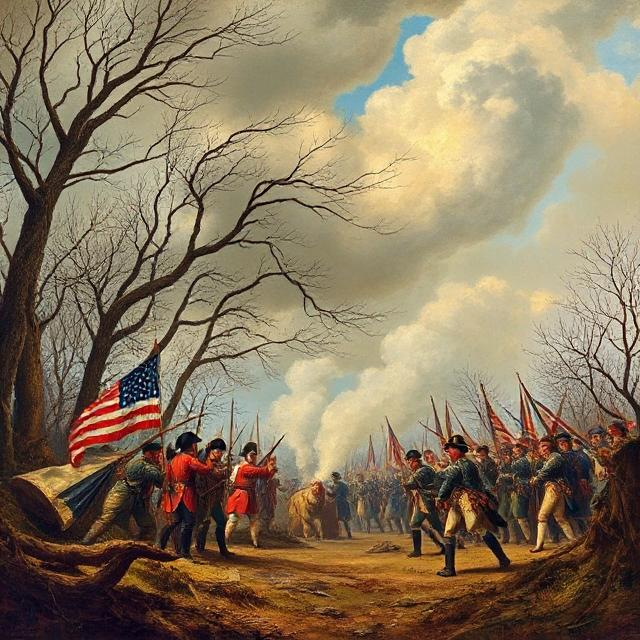
Economic Disruption
The American Revolution (1775-1783) disrupted the colonial economy, as trade with Britain was severely restricted. Inflation and shortages of goods plagued the newly formed nation. The war effort required significant resources, leading to increased debt and economic instability.
Post-War Challenges
After the war, the U.S. faced significant economic challenges, including the need to establish a stable currency and manage war debts. The Articles of Confederation, adopted in 1781, created a weak central government that struggled to address these issues, leading to economic disarray.
The Articles of Confederation
Following independence, the Articles of Confederation (1781-1789) created a weak central government that struggled to address economic challenges. States acted independently, leading to trade disputes and inconsistent economic policies. The inability to levy taxes or regulate trade hampered economic recovery.
Economic Fragmentation
The lack of a strong federal government resulted in economic fragmentation, with states pursuing their own interests. This disunity hindered interstate commerce and created barriers to economic growth. The inability to address issues like currency depreciation and trade deficits contributed to widespread dissatisfaction with the Articles.
The Rise of Manufacturing
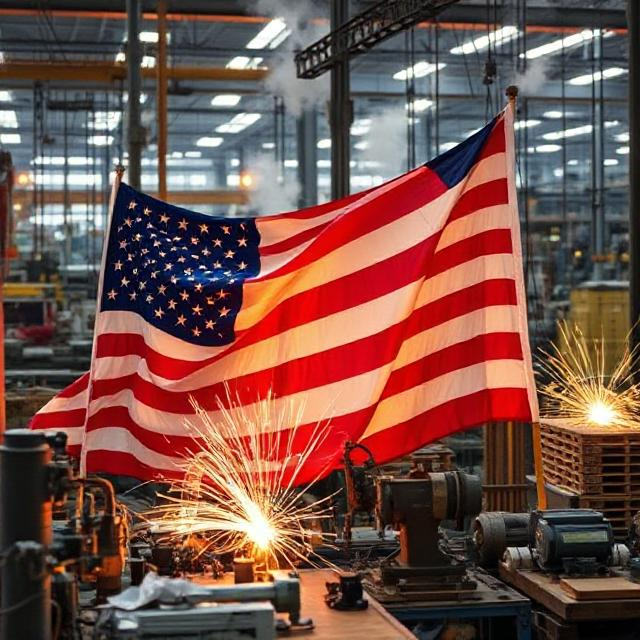
The Industrial Revolution
The early 19th century marked the beginning of the Industrial Revolution in the United States. The introduction of machinery and factory systems transformed production methods. The textile industry, particularly in New England, was among the first to adopt mechanization, leading to increased output and efficiency.
Technological Innovations
Key inventions such as the spinning jenny, power loom, and steam engine revolutionized manufacturing processes. These innovations allowed for mass production and reduced reliance on skilled labor, changing the dynamics of the workforce. Factories began to emerge, concentrating production in urban areas and leading to significant economic shifts.
Labor and Immigration
The rise of factories attracted a large workforce, including immigrants from Europe seeking better opportunities. The influx of immigrants provided labor for burgeoning industries, contributing to urbanization and the growth of cities. However, this also led to labor exploitation and poor working conditions, prompting the emergence of labor movements.
Labor Unrest
As industrialization progressed, workers began to organize for better wages and working conditions. Strikes and labor movements emerged, advocating for rights such as the eight-hour workday and safe working environments. These movements laid the groundwork for future labor rights legislation.
Transportation Revolution
The expansion of transportation networks, including canals and railroads, facilitated the movement of goods and people. The Erie Canal, completed in 1825, connected the Great Lakes to the Atlantic Ocean, significantly reducing transportation costs. The railroad boom in the mid-19th century further accelerated economic growth by linking markets and resources across vast distances.
Economic Integration
The transportation revolution enhanced economic integration, allowing for the efficient movement of raw materials to factories and finished goods to consumers. This interconnectedness fostered regional specializations, with different areas of the country focusing on specific industries and products.
The Antebellum Economy

Regional Economic Differences
By the mid-19th century, the U.S. economy had developed distinct regional characteristics. The North became increasingly industrialized, while the South remained agrarian, relying on cotton production. The invention of the cotton gin in 1793 revolutionized cotton farming, leading to the expansion of plantations and the deepening of the reliance on enslaved labor.
Cotton as King
Cotton became a dominant cash crop in the South, driving economic growth and solidifying the plantation system. The demand for cotton in both domestic and international markets fueled the expansion of slavery, leading to moral and political conflicts that would eventually culminate in the Civil War.
The Market Revolution
The period leading up to the Civil War (1861-1865) is often referred to as the Market Revolution. This era saw the rise of a national market economy, characterized by increased production, distribution, and consumption of goods. Innovations in communication, such as the telegraph, further integrated the economy and facilitated trade.
Consumer Culture
The Market Revolution also gave rise to a consumer culture, as goods became more accessible due to improved transportation and production methods. The proliferation of newspapers and advertising helped shape consumer preferences and created a burgeoning marketplace.
Economic Crises
The antebellum period was marked by economic volatility, including cycles of boom and bust. The Panic of 1837 resulted from speculative investments and bank failures, leading to widespread unemployment and economic hardship. These economic challenges highlighted the fragility of the American economy and the disparities between regions.
Financial Reforms
In response to economic crises, calls for financial reforms grew louder. The establishment of a national bank and regulations on banking practices aimed to stabilize the economy and prevent future panics. However, debates over the role of government in the economy persisted.
The Civil War and Reconstruction

Economic Impact of the Civil War
The Civil War had profound economic consequences. The Northern economy, which had been more industrialized, was better equipped to sustain the war effort. In contrast, the Southern economy suffered devastating losses due to the destruction of infrastructure and the loss of enslaved labor. The war disrupted trade and led to inflation in both the North and South.
War Economy
The war effort required significant resources, leading to increased production in Northern factories. The government implemented measures such as the War Revenue Act to finance the conflict, introducing income taxes and tariffs. These changes laid the groundwork for modern taxation systems.
Reconstruction Era
The Reconstruction era (1865-1877) aimed to rebuild the South and integrate formerly enslaved individuals into the economy. The introduction of sharecropping and tenant farming provided some economic opportunities, but systemic racism and discriminatory policies limited progress. The South struggled to transition from an agrarian economy to a more diversified one.
Economic Disparities
Reconstruction efforts faced significant resistance, leading to the establishment of systems that perpetuated economic disparities. Sharecropping often trapped African Americans in cycles of debt and poverty, undermining their economic independence and opportunities.
The Gilded Age and Industrialization

Rapid Industrial Growth
The late 19th century, known as the Gilded Age, was characterized by rapid industrialization and economic growth. Major industries, including steel, oil, and railroads, expanded dramatically. Figures like Andrew Carnegie and John D. Rockefeller emerged as influential industrialists, shaping the economy and society.
Corporate Expansion
The rise of corporations transformed the economic landscape, with businesses seeking to maximize profits through economies of scale and vertical integration. Monopolies and trusts became common, leading to concerns about competition and consumer rights.
Urbanization and Labor Movements
The shift from rural to urban living was a significant consequence of industrialization. Cities grew rapidly as people flocked to factories for work. However, the harsh realities of industrial labor, including long hours and unsafe conditions, led to the rise of labor unions and strikes, advocating for workers’ rights.
Strikes and Social Unrest
The late 19th century witnessed significant labor unrest, including notable strikes such as the Homestead Strike (1892) and the Pullman Strike (1894). These events highlighted the tensions between labor and management and underscored the need for labor reforms.
Economic Inequality
The Gilded Age also saw significant economic inequality, with a small elite amassing vast wealth while many workers lived in poverty. This disparity sparked debates about economic justice and the role of government in regulating business practices.
Calls for Reform
Reform movements emerged in response to the excesses of the Gilded Age. Progressive activists sought to address issues such as child labor, workplace safety, and political corruption. Their efforts paved the way for significant social and economic reforms in the early 20th century.
The Progressive Era and Economic Reform
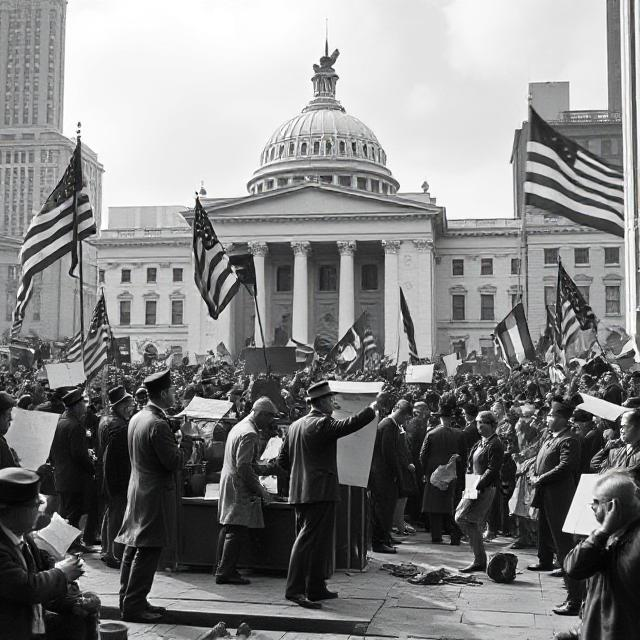
Response to Industrialization
The early 20th century marked the Progressive Era, a response to the excesses of industrialization. Reformers sought to address issues such as labor exploitation, monopolies, and political corruption. The establishment of regulatory agencies, such as the Federal Trade Commission (FTC), aimed to promote fair competition and protect consumers.
Legislative Changes
Progressive reforms led to significant legislative changes, including the Pure Food and Drug Act (1906) and the Meat Inspection Act (1906), which aimed to ensure food safety and consumer protection. These measures reflected growing public concern about the consequences of industrialization.
The Great Depression
The stock market crash of 1929 marked the beginning of the Great Depression, a severe economic downturn that lasted throughout the 1930s. Unemployment soared, banks failed, and businesses closed. The economic crisis prompted the government to intervene on an unprecedented scale.
Economic Hardship
The Great Depression had devastating effects on American families, leading to widespread poverty and displacement. Many people lost their homes and savings, and the social fabric of the nation was strained. The crisis highlighted the vulnerabilities of the capitalist system and raised questions about the role of government in the economy.
New Deal Policies
President Franklin D. Roosevelt’s New Deal introduced a series of programs aimed at economic recovery. Initiatives such as Social Security, public works projects, and financial reforms reshaped the role of government in the economy. The New Deal sought to provide relief to the unemployed, stimulate economic growth, and prevent future crises.
Lasting Impact
The New Deal had a lasting impact on American society and the economy, establishing a precedent for government intervention in economic matters. It also laid the groundwork for the modern welfare state and introduced social safety nets that continue to exist today.
Post-World War II Economic Expansion
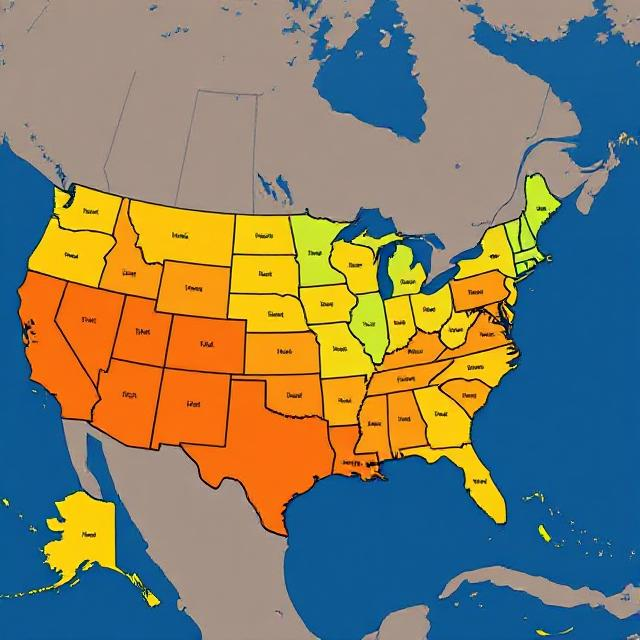
Economic Boom
Following World War II, the U.S. experienced a period of unprecedented economic growth. The war had stimulated industrial production, and returning veterans contributed to a growing consumer economy. Suburbanization, fueled by affordable housing and the GI Bill, transformed American society and consumption patterns.
Consumerism
The post-war era saw the rise of consumerism, with Americans increasingly purchasing goods such as automobiles, appliances, and televisions. The expansion of credit and marketing strategies contributed to a culture of consumption that defined the era.
The Rise of the Middle Class
The post-war era saw the emergence of a prosperous middle class, characterized by rising incomes, home ownership, and access to education. The expansion of the automobile industry and the construction of highways facilitated mobility and contributed to the growth of suburban communities.
Economic Mobility
The post-war economic boom provided opportunities for upward mobility, allowing many Americans to achieve a higher standard of living. The GI Bill enabled veterans to access education and housing, further contributing to the growth of the middle class.
Global Economic Leadership
By the mid-20th century, the U.S. emerged as a global economic leader. The Bretton Woods Conference in 1944 established a new international monetary system, with the U.S. dollar becoming the world’s primary reserve currency. American companies expanded internationally, and the U.S. played a key role in shaping global trade policies.
International Institutions
The establishment of international institutions such as the International Monetary Fund (IMF) and the World Bank reflected America’s commitment to promoting global economic stability and development. These institutions facilitated international cooperation and economic growth.
Late 20th Century Economic Challenges

Stagflation
The 1970s brought economic challenges, including stagflation a combination of stagnant economic growth, high inflation, and rising unemployment. The oil crises of 1973 and 1979 contributed to rising energy costs and economic instability. These challenges prompted shifts in economic policy and a reevaluation of government intervention.
Policy Responses
In response to stagflation, policymakers adopted a mix of monetary and fiscal measures. The Federal Reserve, under Chairman Paul Volcker, implemented tight monetary policies to combat inflation, leading to higher interest rates and short-term economic pain.
Deregulation and Globalization
In the 1980s, a wave of deregulation swept through various industries, including telecommunications and finance. The rise of globalization led to increased trade and investment, as American companies sought new markets and cheaper labor abroad. While globalization contributed to economic growth, it also raised concerns about job displacement and income inequality.
Trade Agreements
The signing of trade agreements such as the North American Free Trade Agreement (NAFTA) in 1993 exemplified the shift towards a more interconnected global economy. While proponents argued that these agreements would boost economic growth, critics raised concerns about job losses in certain industries.
The 21st Century and Economic Resilience

The Great Recession
The subprime mortgage crisis of 2007-2008 triggered the Great Recession, the most severe economic downturn since the Great Depression. The collapse of major financial institutions led to widespread job losses, home foreclosures, and economic uncertainty. The federal government implemented stimulus measures and financial reforms to stabilize the economy.
Recovery Efforts
In response to the crisis, the government enacted measures such as the American Recovery and Reinvestment Act (2009) to stimulate economic growth. The Federal Reserve also implemented policies to lower interest rates and encourage lending, helping to stabilize financial markets.
Recovery and Innovation
In the years following the Great Recession, the U.S. economy gradually recovered. Technological innovation, particularly in the fields of information technology and biotechnology, spurred economic growth. The rise of the gig economy and remote work transformed labor markets and employment patterns.
Technological Advancements
Advancements in technology reshaped industries and created new opportunities. The growth of the internet and digital platforms revolutionized commerce, leading to the rise of e-commerce giants like Amazon and the gig economy, which provided flexible work arrangements for millions.
Current Economic Landscape
As of the early 21st century, the U.S. economy faces both challenges and opportunities. Issues such as income inequality, healthcare costs, and climate change continue to shape economic discourse. The COVID-19 pandemic in 2020 presented unprecedented challenges, leading to significant disruptions in labor markets and global supply chains.
Post-Pandemic Recovery
The pandemic forced many businesses to adapt quickly, accelerating trends such as remote work and digital transformation. The recovery process has highlighted the importance of resilience and adaptability in the face of economic shocks.
Conclusion
The economic history of the United States is characterized by a dynamic interplay of factors that have shaped its development over centuries. From its agrarian roots to its emergence as a global economic leader, the U.S. economy has undergone profound transformations. Understanding this history is essential for grasping the complexities of contemporary economic issues and the ongoing evolution of American society.


